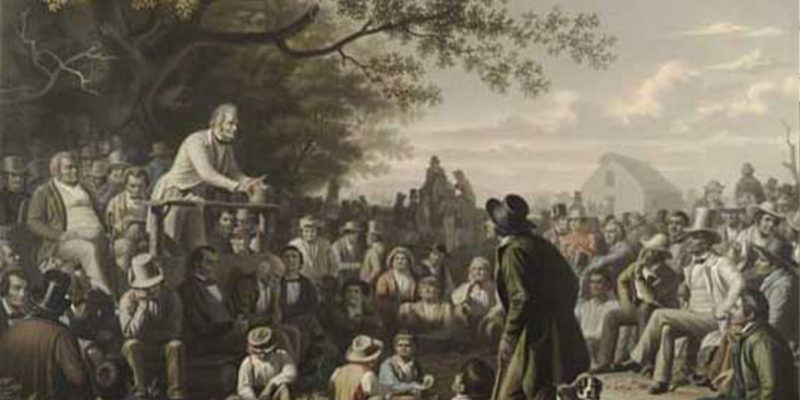On April 15, 2021, Senator Ed Markey (D-MA) and Representative Hank Johnson (D-GA) introduced the Judiciary Act of 2021 to their respective chambers of Congress. This piece of legislation would add four associate justice seats to the United States Supreme Court, transforming the Court from nine to thirteen justices. In his defense of the bill, Senator Markey argued that the Court had been politicized under the Trump Administration and this bill would help “restore the Court’s balance and public standing” (Markey 2021). Another cosponsor, Congressman Mondaire Jones (D-NY), cited the Court’s majority opinions in Shelby County v. Holder (2013) and Rucho v. Common Cause (2019) as rationale for the expansion of the Court (Markey 2021). The introduction of this bill drew sharp criticism from both Republicans and Democrats (Calamur and Totenberg 2021; Ford 2021). Despite the bipartisan disapproval of the Act, politicians and academics have continued to call for the expansion of the Supreme Court (Roosevelt 2021; Tribe and Griffith 2021).
The debate over the proper size of the Supreme Court is not new. Given that Article III of the United States Constitution does not prescribe a set number of Supreme Court justices, the size of the Court is determined by legislation. A little over a year after ratification of the Constitution, Congress passed the Judiciary Act of 1789, setting the number of Justices at six. From 1789 to 1869, the number of Justices on the Supreme Court fluctuated between five and ten. The Judiciary Act of 1869 set the number of Justices to its present nine.
The most notorious attempt to change the size of the Supreme Court since 1869 came during the presidency of Franklin D. Roosevelt. The Judicial Procedures Reform Bill of 1937, colloquially known as the “court-packing plan,” would have allowed the President to appoint a new justice each time a sitting justice did not retire at age 70. Roosevelt’s plan, like that of Markey and Johnson, faced intense criticism, including from Roosevelt’s own vice president John Nance Garner, who expressed his disapproval by “holding his nose with one hand and vigorously shaking his thumb down with the other” on the Senate floor (McKenna 2002, 285).
Another notable critic of FDR’s plan was the former President, and Roosevelt’s opponent in the 1932 President Election, Herbert Hoover. In a series of speeches and writings, the thirty-first President articulated a forceful opposition to the court-packing plan, one relevant to our current political moment. Specifically, Hoover argued that FDR’s plan would undermine the independence of the judicial branch, harm the reputation of the Court, and that such action would result in a cyclical increase in the size of the Court for partisan reasons. These critiques of FDR’s plan are as relevant today in the face of the Judiciary Act of 2021 as they were in 1937.
The first reason Hoover objected to FDR’s court-packing plan is that it would harm the independence of the judicial branch, ultimately leading to an erosion of civil liberties. In 1937, he claimed that the adoption of the Judicial Procedures Reform Bill would harm the Judiciary’s independence as it would lead to “The Court and the Constitution becom[ing] the tool of the Executive… [and] the Supreme Court shall be made subjective to the Executive” (Hoover 1938, 233-34). As opposed to having three equal branches of government, the judicial branch would become a subordinate arm of the executive branch, eliminating the important check the judiciary places on the executive. Without an independent Supreme Court to reel in the excesses of the President, Hoover believed the rights and liberties enjoyed by free Americans would be threatened. He saw an independent Supreme Court as “the ultimate security of every cottage. It is the safeguard of free men” (Hoover 1938, 236). For Hoover, an independent judiciary was a necessary condition for the enjoyment of freedom and since FDR’s court-packing plan threatened the independence of the judiciary, he vigorously opposed said plan.
Today’s debate over court expansion would similarly harm the judiciary’s independence. Central to the American constitutional system is the separation of powers where the judicial, executive, and legislative powers are separated into three distinct and equal branches of government (Montesquieu 2001, 173; Hamilton, Madison, and Jay 2001, 249-55). Despite occasional cooperation, such as during the judicial nomination process, the three branches were intended to be independent from one another in most respects and serve as a check on each other’s power. Like the advocates of the Judicial Procedures Reform Bill, the defenders of the Judiciary Act of 2021 point to the specific outcomes by the Court and the Court’s judicial philosophy as justification for expansion (Roosevelt 1937; Markey 2021). This overarching political motive would signal to current and future Justices that their decisions will be subject to partisan evaluation and imply that their decisions on divisive issues should satiate the political party in power, as opposed to making an objective decision based upon the relevant facts and law. Instead of cultivating a constitutional order in which “each [branch] may be a check on the other” as Madison described in Federalist 51, the three branches of government would neglect the critical role of limiting one another’s power (Hamilton, Madison, and Jay 2001, 269). They would, as President Roosevelt phrased it, position themselves as a collaborative “three horse team,” (Roosevelt 1937). However, following the argument from The Federalist, the judicial branch must remain independent to ensure that the two political branches do not overstep their power and imperil the civil liberties of Americans. The composition of the Court should not be altered due to political preferences because it would damage judicial independence and thereby endanger the freedoms enjoyed by the Americans.
Hoover’s second reason for resisting FDR’s court-packing plan centers on the Court’s reputation. Although similar to his worry over the impact of court-packing on judicial independence, this concern differs slightly. His concern centers on the public perception of the Court as an independent defender of the Constitution, not if the Court actually fulfills its constitutional role. Hoover worried that court expansion would damage the legitimacy of the Court, the only currency the Court has since it “has no influence over the sword or purse” (Hamilton, Madison, and Jay 2001, 402). Hoover posited that “once political power makes use of the Court, its strength and moral prestige are irretrievably weakened” (Hoover 1938, 235). He believed FDR’s judicial plan would politicize the Court and, therefore, damage the strength and legitimacy of the Court. For Hoover, the ability of the Court to have its decisions followed is inextricably linked to its public reputation. If the Court is seen as merely another political branch, its legitimacy as the disinterested arbiter of disputes is undermined. Thus, the Court will be unable to effectively carry out its role in the constitutional order, upending the balance of power in the American constitutional system. The current plan to expand the Supreme Court, like Roosevelt’s, would weaken the legitimacy of the Court in the public eye.
The third reason Hoover opposed the court-packing plan is he believed it would lead to a never-ending cycle of increasing the size of the Court. He argued that if Roosevelt’s plan succeeded, the Court would endure an on-going “balancing” effort each time the opposite party led the other two branches of government. Moreover, Hoover asserted that “If Mr. Roosevelt can change the Constitution to suit his purposes by adding to the members of the Court, any succeeding President can do it to suit his purposes” (Hoover 1938, 233). This would ultimately deteriorate the Court’s role in the constitutional order because the Court would become a mere extension of presidential whim. According to Hoover, this too would turn the Court into a third political branch, upsetting the separation of powers and tampering with the proper operation of the United States government.
This critique specifically is applicable today because his hypothetical is still very possible. Given the intense partisan fights over the decisions of the Supreme Court as well as the Supreme Court nomination process, there is no reason to think that Presidents and Senators would restrain themselves if they had the opportunity to change the composition of the Supreme Court to better reflect their political preferences under the banner of “balancing” a partisan Court. If this were to occur, the Supreme Court would increase in size with each presidential term, while its ability to conduct its proper role in the constitutional order would decrease.
President Hoover’s three major critiques of the Judicial Procedures Reform Bill of 1937 serve as a useful framework for evaluating similar bills today. Specifically, his arguments that court expansion will damage judicial independence and public perception of the Court are important to remember particularly for those considering the merits of court expansion. Also, Hoover’s concern that expanding the size of the Court once will lead to a never-ending cycle of adding justices to the Supreme Court is particularly important in evaluating such plans. Given the increased attention to Supreme Court reform recently, it is essential that those interested in reforming the Court consider the experiences of the past even as they develop proposals aimed at meeting the challenges of the present. Ultimately, these effects of court expansion, as described by Hoover, are undesirable as it would leave the Court unable to perform its prescribed constitutional role and undermine the separation of powers central to the American republic.
Works Cited
Calamur, Krishnadev and Nina Totenberg. 2021. “Democrats Unveil Long-Shot Plan to Expand Size of Supreme Court from 9 to 13.” National Public Radio April 15. https://www.npr.org/2021/04/15/987723528/
democrats-unveil-long-shot-plan-to-expand-size ofsupreme-court-from-9- to-13.
Ford, Matt. 2021. “The Democrats’ Court-Packing Plan Doesn’t Make Any Sense.” The New Republic April 15. https://newrepublic.com/article/ 162055/democrats-court packingjudiciary-act-I-make-sense.
Hamilton, Alexander, James Madison, and John Jay. 2001. The Federalist. Edited by George W. Carey and James McClellan. Indianapolis, IN: Liberty Fund.
Hoover, Herbert. 1938. Address Upon the American Road – 1933-1938. New York, NY: Charles Scribner’s Sons.
Markey, Edward J. 2021. “Expand the Supreme Court: Senator Markey and Reps. Nadler, Johnson, and Jones Introduce Legislation to Restore Justice and Democracy to Judicial System.” April 15. https://www.markey.
senate.gov/news/press-releases/expand-the-supreme-court-senator- markeyand-reps-nadler-johnson-and-jones-introduce-legislation-to- restore-justice-and-democracy-to-judicial-system.
McKenna, Marian C. 2002. Franklin Roosevelt and the Great Constitutional War: The Court-Packing Crisis of 1937. New York, NY: Fordham University Press.
Montesquieu, Baron de. 2001. The Spirit of The Laws. Translated by Thomas Nugent. Ontario: Batoche Books.
Roosevelt III, Kermit. 2021. “I Spent 7 Months Studying Supreme Court Reform. We Need to Pack the Court Now.” Time December 10. https://time.
com/6127193/supreme courtreform-expansion/.
Roosevelt, Franklin Delano. 1937. “Fireside Chat 9: On “Court-Packing.” Transcript of speech delivered in Washington, DC, March 9, 1937. https://millercenter.org/thepresidency/presidential speeches/march-9- 1937-fireside-chat-9-court-packing
Tribe, Laurence and Thomas Griffith. 2021. “The Supreme Court isn’t Well. The Only Hope for a Cure is More Justices.” The Washington Post December 9. https://www.washingtonpost.com/opinions/2021/12/09/expand- supreme-court-laurence tribenancy-gertner/
U.S. Const. art. Ii, § 2, cl. 2.




 Compass is an online journal that provides a space for the work of talented undergraduates who have original and well-articulated insights on important ideas and issues relating to American democracy understood in the broad contexts of political philosophy, history, literature, economics, and culture.
Compass is an online journal that provides a space for the work of talented undergraduates who have original and well-articulated insights on important ideas and issues relating to American democracy understood in the broad contexts of political philosophy, history, literature, economics, and culture.